Troubleshooting
For the basic camera communication and parameterization as well as the creation of the Initialization Commands, three components are mainly relevant:
- the content of the GenApi device description file
- the camera behavior
- and the GevImageAcquisition object behavior.
GenApi device description file
The GigE Vision specification includes the GenApi module of the GenICam specification, which describes the functions supported by a camera. This description takes the form of an XML device description file, which must be created in conformity with the specification. The GenApi description provided by a camera is checked upon receipt. If non-compliant digits are included, they are reported as warnings or errors.
- A warning is issued, for example, if undefined registers are located in the reserved bootstrap area. These registers are subsequently ignored, but this does not usually lead to restrictions in operation. In individual cases it has to be checked whether the reported registers are needed.
- An error is reported, for example, if the described access rights do not match the camera behavior. That is, if the camera returns an error when reading registers marked readable or writing registers marked writable.
- If the GenApi description contains completely non-compliant passages, in rare cases the camera may not be able to operate at all.
Camera behavior
The camera behavior can have an impact if, as described earlier, the behavior differs from the GenApi description and if registers contain interdependencies or influence each other.
- Registers can, for example, be locked by other registers, so that these must first be activated or deactivated.
- Register values can be influenced by other registers or formulas which, for example, restrict the maximum value.
- The camera can change register values when other registers are written. For example, the camera may automatically reset the ROI when the pixel format is written.
 | Refer to the manufacturer's documentation In case of problems with the camera behavior, compare precisely with the manufacturer's documentation. It is possible, for example, that the writing of individual ReadWrite registers is wrongly rejected by the camera. |
GevImageAcquisition object behavior
The GevImageAcquisition object is GigE Vision certified as part of the TC3 GigE Vision Connector product and therefore behaves in a standard-compliant manner. Concatenating commands, if supported by the camera, and iterating selectors is active by default in the settings. This means that all possible register combinations are read or written when communicating with the camera. This can occasionally lead to problems due to the amount of commands or the timing. To remedy this, you can disable EnableConcatenatedCommands in the Image Acquisition Module or the Iterate Selectors automatically in the settings.
Messages
The components described above and their behavior have different effects on the creation of the Initialization Commands or on the possible messages.
Warnings
Warnings are displayed if the values read back differ from the values previously written. The differences can be caused by different camera behavior or dependencies between registers. This does not mean that the camera does not work with the Initialization Commands. Therefore warnings have no influence on the creation with Create anyway. Afterwards you should test if the reported registers have the correct value and the camera behaves as desired.
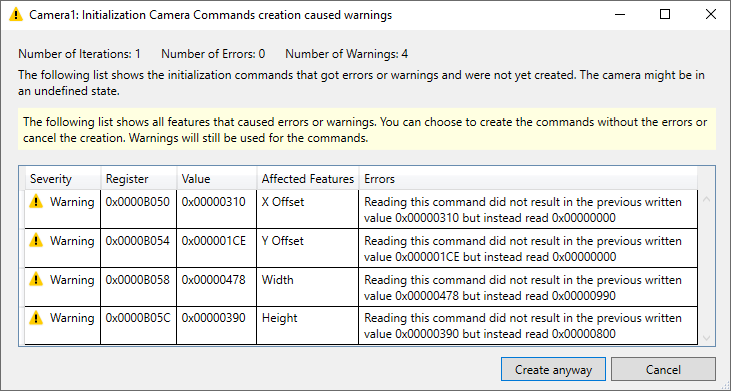
An example of when warning messages may occur is when an ROI is set. Depending on the current values in the camera, the warning occurs because the offsets are written first according to the GenApi order. If an offset greater than 0 is to be written, the width or height must be correspondingly smaller than the maximum value. In this case, the camera then resets all ROI values, causing the difference. In this case, the order of the ROI registers in the configuration list can be changed so that the width and height are written before the two offsets. If necessary in special cases, a register can also be copied, shifted in the order and thus written several times.
Error
Errors are reported if individual register values could not be written. As described above, this can have various causes, such as incorrect or changed limit values, addresses, write permissions or formula calculations at the time of writing. The affected registers are omitted when creating with Create anyway and checked off in the configuration list. Subsequently, it should be tested whether the omitted registers have an influence on the camera functionality.
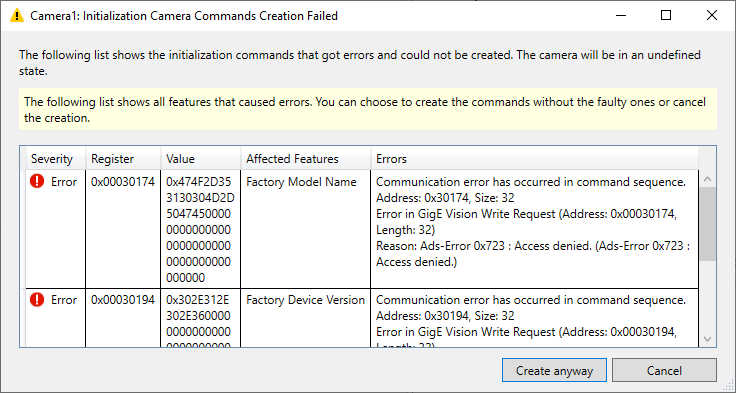
If, for example, as can be seen in the screenshot, it is only the model name, or the register has not been changed and has a suitable default value, the camera can be used without restrictions despite this error message.
Fatal errors
Fatal errors only occur if the camera does not respond within a certain time. Then the process is aborted and one of the following messages appears. In these cases, the corresponding timeout must be adjusted.
Timeout
Force IP or GVCP timeout
In the course of writing the Initialization Commands, the Force IP command is also sent if it is configured. If the respective camera takes a long time to set the IP with this command, the following timeout error can occur:
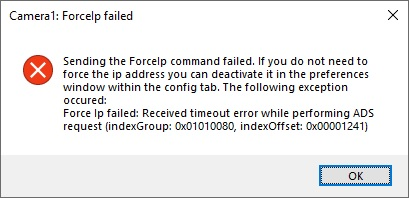 Fig.2: Error during Force IP
Fig.2: Error during Force IP | Persistent IP addresses If no Force IP is used, it is recommended to set a persistent IP address. |
In this case the Force IP can be deactivated in the configuration list. Alternatively, or in the event of a GVCP timeout, the TransmissionTimeout and/or the MaxTimeouts can be increased in the TcCOM parameters from GVCP Module. Note that the ADS Communication Timeout in the Settings window should always equal at least the product of the two preceding parameters.
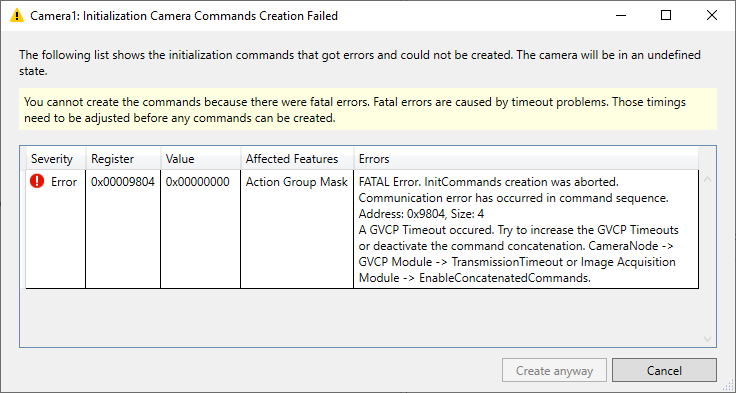 Fig.3: Critical GVCP timeout error when creating Initialization Commands
Fig.3: Critical GVCP timeout error when creating Initialization CommandsADS Timeout
In case of an ADS Timeout, increase the parameter ADS Communication Timeout in the settings window.
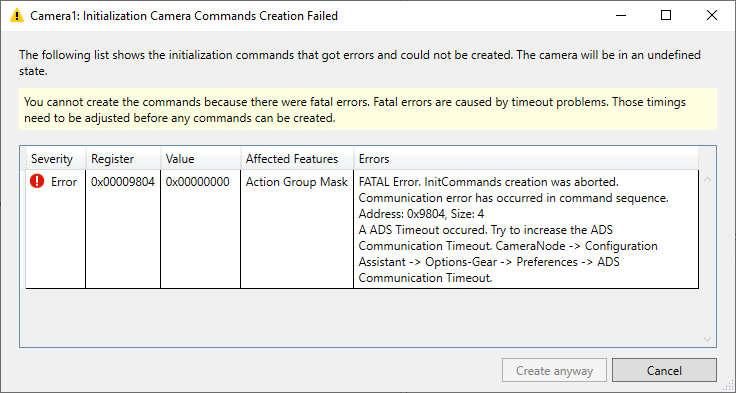 Fig.4: Critical ADS timeout error when creating Initialization Commands
Fig.4: Critical ADS timeout error when creating Initialization Commands